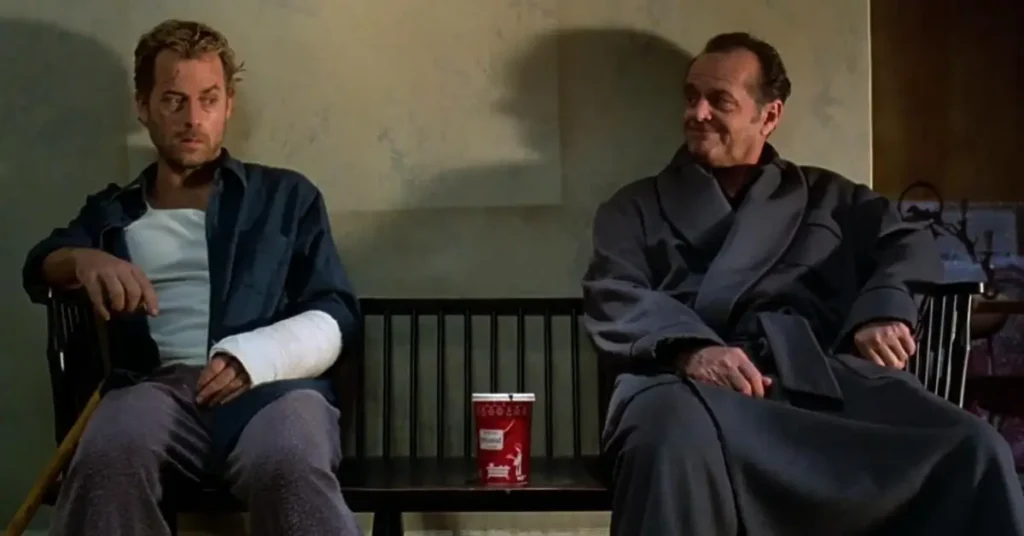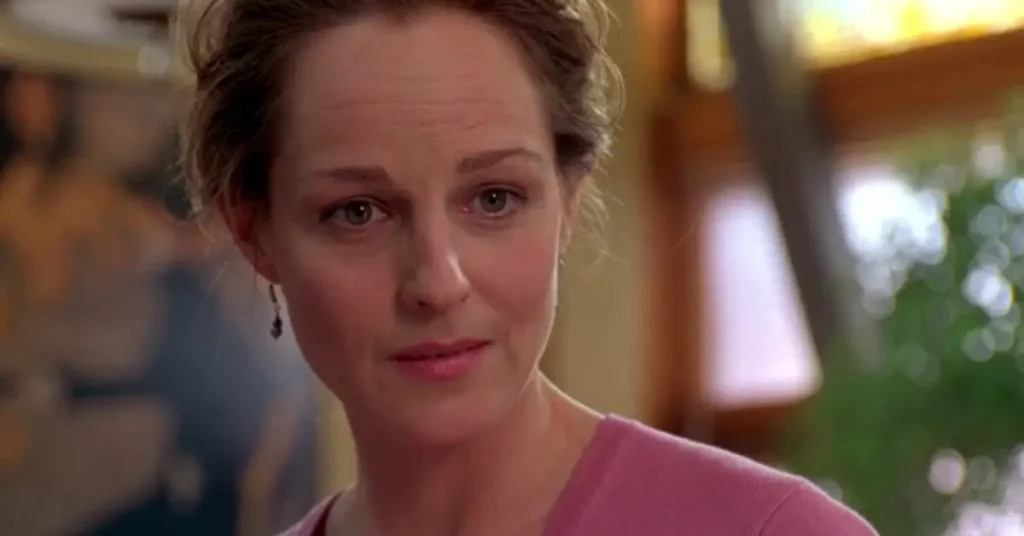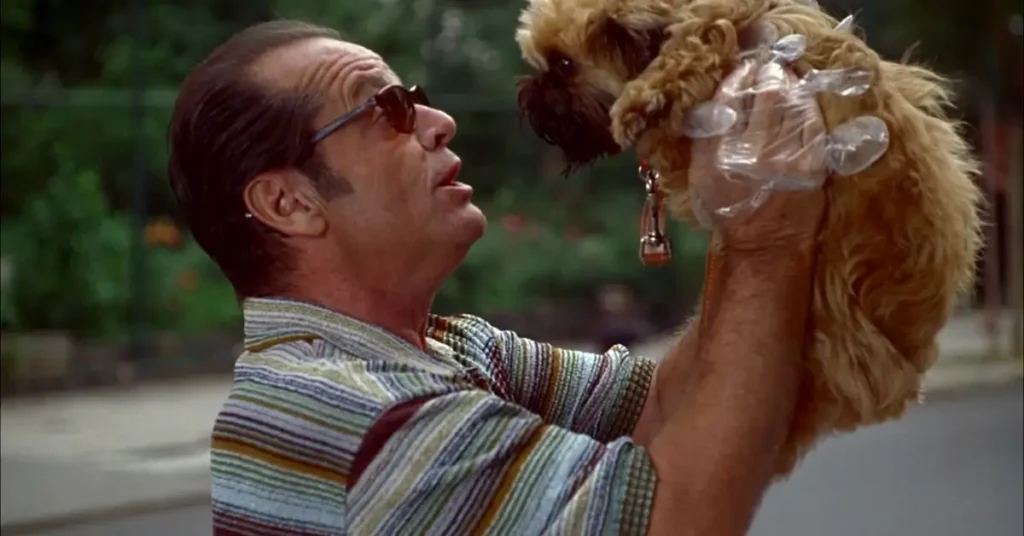As Good As It Gets: A Heartfelt Exploration of Mental Health and Human Connection
When watching films that portray mental health conditions, few strike the delicate balance between authenticity, humor, and emotional resonance quite like As Good As It Gets. This 1997 romantic comedy-drama offers viewers a remarkable journey into the life of a man with obsessive-compulsive disorder (OCD) and how human connections can transform even the most isolated individuals. The film stands as a landmark in cinema’s portrayal of mental health, presenting a protagonist whose condition is neither romanticized nor demonized, but rather shown as one facet of a complex, flawed, yet ultimately redeemable human being.
Thank you for reading this post, don't forget to subscribe!Basic Film Information
Title: As Good As It Gets
Release Date & Production Year: December 25, 1997
Director: James L. Brooks (known for emotionally intelligent, character-driven films like “Terms of Endearment” and “Broadcast News”)
Screenwriters: Mark Andrus and James L. Brooks (crafting a screenplay that balances humor with profound emotional insights)
Main Cast & Characters:
- Jack Nicholson as Melvin Udall (A bestselling novelist with severe OCD and misanthropic tendencies)
- Helen Hunt as Carol Connelly (A single mother and waitress dealing with her son’s chronic illness)
- Greg Kinnear as Simon Bishop (A gay artist whose assault and subsequent depression form a key storyline)
- Cuba Gooding Jr. as Frank Sachs (Simon’s art dealer and friend)
- Skeet Ulrich as Vincent (The man who assaults Simon)
- Shirley Knight as Beverly Connelly (Carol’s mother)
Genre: Romantic comedy-drama
Awards: Won two Academy Awards: Best Actor (Jack Nicholson) and Best Actress (Helen Hunt); nominated for five additional Oscars including Best Picture
Runtime & Rating: 139 minutes, Rated PG-13 for strong language, thematic elements, and some nudity
Plot Summary
General Overview
As Good As It Gets centers on Melvin Udall, a successful but deeply misanthropic novelist suffering from obsessive-compulsive disorder. His structured life is disrupted when he reluctantly becomes caretaker to his neighbor’s dog after the neighbor, a gay artist named Simon, is brutally assaulted. Simultaneously, Melvin becomes fixated on Carol, the only waitress at his local restaurant who tolerates his demanding behavior. When Carol’s son’s illness keeps her from work, Melvin arranges for premium medical care to ensure her return to the restaurant. These relationships gradually force Melvin to confront his mental health issues and begin a journey toward meaningful human connection.
Mental Health Themes
The film primarily explores obsessive-compulsive disorder, depicting both the compulsive behaviors and the anxiety that drives them. It also touches on depression, trauma recovery, caregiver stress, and the isolation that often accompanies mental illness. Throughout the narrative, the film examines how mental health challenges affect not only the individuals experiencing them but also those in their orbit.

Key Turning Points
Several pivotal moments highlight Melvin’s mental health journey:
- His disrupted routine when forced to care for Simon’s dog, Verdell
- The moment he steps on cracks in the sidewalk to reach Carol’s apartment
- The road trip to Baltimore where he shares a vulnerability with Carol
- His realization that he needs help and wants to change for the people he’s come to care about
These moments illustrate the gradual nature of mental health improvement and the importance of motivation in seeking change.
Ending Analysis
The film concludes with measured optimism rather than suggesting a magical cure for Melvin’s OCD. While romance blooms between Melvin and Carol, and both Simon and Carol’s son Spencer show health improvements, the ending suggests that Melvin’s condition remains part of him. The final scene of Melvin and Carol walking into the bakery with Melvin still avoiding cracks but now able to accept Carol’s hand symbolizes progress rather than complete transformation. This nuanced conclusion offers hope while acknowledging the ongoing nature of mental health management.
Setting & Cinematic Techniques
Filming Locations
The film is primarily set in New York City, with Melvin’s apartment building and Carol’s Brooklyn neighborhood establishing a strong sense of place. The controlled environment of Melvin’s apartment reflects his need for order, while the bustling restaurant scenes highlight his discomfort in less predictable spaces. The road trip to Baltimore provides a literal and metaphorical journey away from comfort zones, forcing character growth through environmental change.
Cinematography
Cinematographer John Bailey employs visual techniques that subtly reinforce the film’s mental health themes:
- Tight framing during Melvin’s compulsive rituals creates a sense of constriction
- Warmer lighting gradually appears as Melvin opens himself to connection
- Careful composition emphasizes physical boundaries and their eventual crossing
- The camera movement becomes gradually less rigid as Melvin’s character evolves
Sound & Music
Hans Zimmer’s score delicately balances comedic and emotional moments, never overplaying Melvin’s compulsions for laughs. The soundtrack features songs that complement emotional beats without manipulating audience response. Sound design subtly emphasizes Melvin’s sensory sensitivities, particularly in restaurant scenes where background noise levels reflect his comfort or discomfort in the environment.
Acting & Character Portrayal
Lead Actor’s Performance
Jack Nicholson’s Oscar-winning performance as Melvin Udall stands as one of cinema’s most nuanced portrayals of obsessive-compulsive disorder. He captures both the visible compulsions the ritual hand-washing, the refusal to step on cracks, the need for plastic utensils and the underlying anxiety that drives these behaviors. Crucially, Nicholson never reduces Melvin to his disorder; instead, he portrays a fully realized character whose OCD is one aspect of a complex personality. His performance walks the difficult line between humor and respect, allowing audiences to occasionally laugh with (not at) Melvin while maintaining empathy for his struggles.
Supporting Cast
Helen Hunt brings remarkable dignity and strength to Carol, a character whose own mental health challenges stem from caregiver fatigue and socioeconomic stress. Greg Kinnear’s portrayal of Simon’s depression following his assault offers a counterpoint to Melvin’s more outwardly visible condition, showing how trauma can lead to profound psychological impact. Together, the supporting cast creates a community of imperfect people whose own struggles help contextualize Melvin’s journey.
Accuracy & Authenticity
For a film of its era, As Good As It Gets presents a relatively accurate portrayal of obsessive-compulsive disorder, showing both the compulsive behaviors and the obsessive thoughts that drive them. Melvin’s symptoms including contamination fears, counting, and rigid routines represent common manifestations of OCD. The film also accurately portrays the social isolation that often accompanies untreated mental health conditions and the gradual, non-linear nature of improvement.
Mental Health Representation: Strengths & Weaknesses
Psychological Accuracy
The film’s strengths in portraying OCD include:
- Showing the time-consuming nature of compulsions
- Depicting the extreme anxiety when routines are disrupted
- Illustrating how OCD affects social relationships
- Avoiding the common media trope of equating OCD with mere perfectionism
However, the film takes some creative liberties:
- It underplays the role of professional treatment in managing OCD
- Some symptoms appear inconsistent for narrative convenience
- The pace of Melvin’s improvement is somewhat accelerated for storytelling purposes

Stigmatization vs. Awareness
As Good As It Gets made significant contributions to public awareness of OCD at a time when mental health was rarely discussed in mainstream cinema. By presenting a protagonist with OCD who is neither defined solely by his condition nor “cured” by love, the film helped normalize the idea that people with mental health conditions lead complex lives worthy of storytelling. However, some of Melvin’s more misanthropic behaviors risked reinforcing negative stereotypes about those with mental illness being inherently antisocial.
Impact on Public Perception
The film significantly increased public awareness of OCD, bringing the condition into mainstream conversation. Mental health professionals noted an uptick in people seeking information about OCD following the film’s release. While the portrayal isn’t perfect by contemporary standards, it represented a landmark moment in depicting mental illness with nuance in a commercially successful film.
Critical Reception & Awards
Critics’ Reviews
As Good As It Gets received generally positive reviews, with particular praise for the performances. Critics appreciated the film’s willingness to present a protagonist with significant flaws while maintaining audience empathy. Some reviewers noted the challenge of balancing comedy with respect for mental health conditions, with most agreeing that the film largely succeeded in this difficult task. The film holds an 85% rating on Rotten Tomatoes.
Audience Reactions
General audiences responded warmly to the film, making it a commercial success with over $300 million worldwide against a $50 million budget. Viewers with OCD reported mixed feelings many appreciated seeing representation on screen, while others noted inaccuracies or felt uncomfortable with humor derived from Melvin’s compulsions. Mental health advocacy groups generally supported the film for bringing attention to OCD while acknowledging its limitations.
Awards & Nominations
The film received seven Academy Award nominations, with wins for both Jack Nicholson and Helen Hunt in the lead acting categories. It also received numerous Golden Globe nominations and wins, including Best Motion Picture – Musical or Comedy. These accolades helped legitimize mental health as a subject worthy of serious artistic exploration in mainstream cinema.
Cultural & Social Impact
Discussions Sparked
As Good As It Gets generated important conversations about:
- The nature of OCD beyond stereotypical presentations
- The impact of mental health conditions on relationships
- The role of empathy in understanding those with mental illness
- The balance between accommodating mental health needs and encouraging growth
Influence on Other Films
The film’s commercial and critical success helped pave the way for more nuanced mental health portrayals in mainstream cinema. Its approach of using a character’s mental health condition as an aspect of their personality rather than their defining characteristic influenced subsequent films. The film demonstrated that audiences could connect with protagonists facing mental health challenges, expanding possibilities for character development in Hollywood.
Mental Health Advocacy
While not explicitly designed as an advocacy piece, the film contributed to growing public awareness about OCD at a time when mental health stigma was significantly stronger than today. Mental health organizations used the film’s popularity as an opportunity to provide accurate information about OCD and correct misconceptions.
Personal Reflection & Final Thoughts
As Good As It Gets remains significant for presenting mental health challenges within a mainstream romantic comedy framework, making these issues accessible to audiences who might not seek out more clinical or dramatic treatments of the subject. The film’s greatest strength lies in humanizing a character whose mental illness might otherwise alienate him from viewers, inviting empathy rather than judgment.
The film provides valuable insights for viewers seeking to understand OCD beyond stereotypical representations. Through Melvin’s character, audiences glimpse the anxiety and frustration behind compulsive behaviors that might otherwise seem irrational. For those experiencing mental health challenges, the film offers recognition that progress often comes in small steps rather than dramatic transformations.
I would recommend this film to people struggling with mental health issues, with the caveat that some of Melvin’s behaviors and the occasional humor at his expense might be uncomfortable for those with OCD. The film’s ultimate message that meaningful connection is possible even when mental health creates barriers offers genuine encouragement without promising unrealistic cures.
The film could have improved its mental health portrayal by including more explicit reference to professional treatment options and by more clearly distinguishing between Melvin’s OCD symptoms and his generally misanthropic personality traits, which sometimes blur together in ways that might reinforce stereotypes.

Conclusion
As Good As It Gets stands as a significant milestone in cinema’s portrayal of mental health, particularly obsessive-compulsive disorder. Through Melvin Udall’s journey from isolation to connection, the film offers a nuanced exploration of how mental health conditions affect daily life, relationships, and personal growth. While its portrayal isn’t perfect by contemporary standards, the film deserves recognition for bringing OCD into mainstream awareness with a complexity rarely seen in commercial cinema of the 1990s.
The film reminds us that mental health challenges don’t define a person’s entire being, nor do they preclude meaningful relationships and personal development. In showing Melvin’s gradual progress rather than miraculous transformation, As Good As It Gets acknowledges the ongoing nature of mental health management while still offering hope for positive change. This balanced approach, combined with exceptional performances and thoughtful direction, ensures the film’s continued relevance in discussions of mental health representation in cinema.
What are your thoughts on this film’s approach to portraying OCD? Does its use of humor help make mental health more accessible as a topic, or does it sometimes cross the line into problematic territory? How do you think representations like this one have shaped public understanding of obsessive-compulsive disorder?

